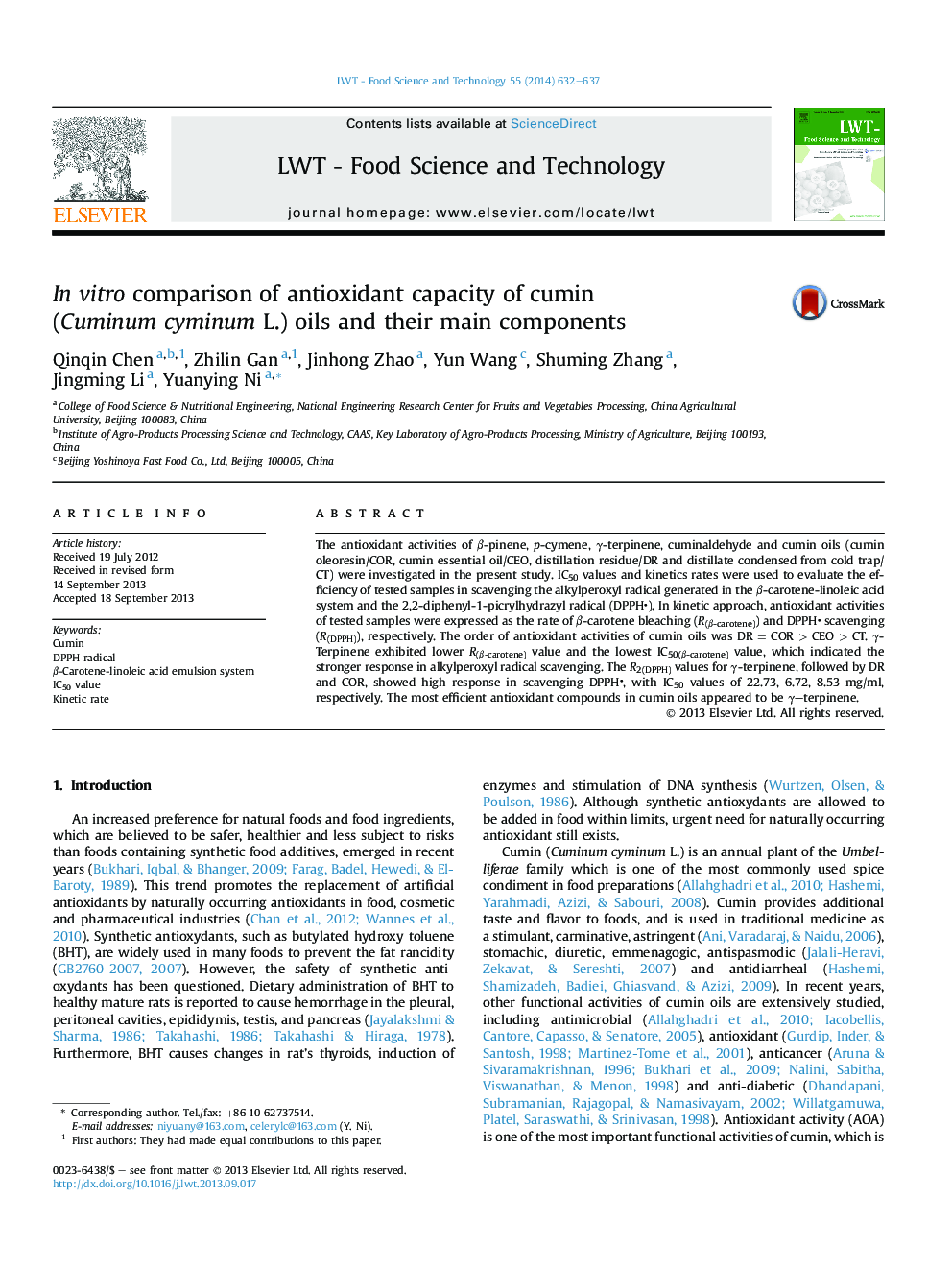| کد مقاله | کد نشریه | سال انتشار | مقاله انگلیسی | نسخه تمام متن |
|---|---|---|---|---|
| 6404532 | 1330904 | 2014 | 6 صفحه PDF | دانلود رایگان |

- Antioxidant activity of β-pinene, p-cymene, γ-terpinene, cuminaldehyde was studied.
- Antioxidant efficiency was estimated by IC50 values and kinetics rates.
- Results showed γ-terpinene was the effective antioxidant component in cumin oil.
The antioxidant activities of β-pinene, p-cymene, γ-terpinene, cuminaldehyde and cumin oils (cumin oleoresin/COR, cumin essential oil/CEO, distillation residue/DR and distillate condensed from cold trap/CT) were investigated in the present study. IC50 values and kinetics rates were used to evaluate the efficiency of tested samples in scavenging the alkylperoxyl radical generated in the β-carotene-linoleic acid system and the 2,2-diphenyl-1-picrylhydrazyl radical (DPPH). In kinetic approach, antioxidant activities of tested samples were expressed as the rate of β-carotene bleaching (R(β-carotene)) and DPPH scavenging (R(DPPH)), respectively. The order of antioxidant activities of cumin oils was DR = COR > CEO > CT. γ-Terpinene exhibited lower R(β-carotene) value and the lowest IC50(β-carotene) value, which indicated the stronger response in alkylperoxyl radical scavenging. The R2(DPPH) values for γ-terpinene, followed by DR and COR, showed high response in scavenging DPPH, with IC50 values of 22.73, 6.72, 8.53 mg/ml, respectively. The most efficient antioxidant compounds in cumin oils appeared to be γ-terpinene.
Journal: LWT - Food Science and Technology - Volume 55, Issue 2, March 2014, Pages 632-637